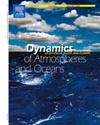How to Survive Intensive Harvesting: The High Recruitment Rates of the Precious Mediterranean Red Coral (Corallium rubrum L. 1758)
IF 1.9
4区 地球科学
Q2 GEOCHEMISTRY & GEOPHYSICS
引用次数: 0
Abstract
The recruitment process is a fundamental step in population life cycles that determines survival, population demographic structure, and dynamics. The success of recruitment events repeated over successive years greatly affects the survival of long-lived gorgonian populations. Here, we report the recruitment process of the precious, heavily harvested Mediterranean gorgonian Corallium rubrum (red coral) on both settlement tiles and natural substrates over different Mediterranean areas. Red coral is a gonochoric internal brooder that reproduces in early summer. Lecithotrophic planulae settle 15–30 days after release in semi-dark environments at depths between 15 and 800 m. In autumn, 0.58–0.68 mm-wide recruits can be observed on the vaults of small crevices and caves and on rocky cliffs and boulders. Owing to their small size, there is limited knowledge of C. rubrum recruitment in the field. In this study, we examined the recruitment density and distribution in Canadells (Banyuls sur Mer, France) and Calafuria (Livorno, Italy) and compared these findings with those collected over different Mediterranean areas. Red coral exhibited high recruitment values ranging from 0.43 to 13.19 recruits dm−2. The distribution pattern of recruits, examined at a small spatial scale via nearest-neighbor distance analysis, revealed a significantly higher patch frequency on the natural substrate than on settlement tiles, presumably because of the scarcely available spots of free space on the former substrate, which are crowded by competitor species.如何在集约化采伐中生存:珍贵的地中海红珊瑚(Corallium rubrum L. 1758)的高复种率
人口招募过程是决定生存、人口结构和动态的人口生命周期的一个基本步骤。连续多年重复的招募活动的成功极大地影响了长寿柳珊瑚种群的生存。在这里,我们报告了珍贵的、大量收获的地中海柳珊瑚(Corallium rubrum)在不同地中海地区的聚落瓦和天然基质上的招募过程。红珊瑚是一种雌雄同体的内部种鱼,在初夏繁殖。电营养型盘藻在释放后15 - 30天在15 - 800米深的半黑暗环境中定居。在秋天,在小裂缝和洞穴的拱顶以及岩石悬崖和巨石上可以观察到0.58-0.68毫米宽的新生生物。由于其体积小,在该领域对红草的招募知识有限。在这项研究中,我们检查了Canadells (Banyuls sur Mer,法国)和Calafuria (Livorno,意大利)的招募密度和分布,并将这些发现与在地中海不同地区收集的结果进行了比较。红珊瑚表现出较高的招募值,范围为0.43 ~ 13.19新兵dm−2。通过最近邻距离分析,在小空间尺度上研究了新物种的分布模式,发现天然基质上的斑块频率明显高于聚落瓦,这可能是因为前者基质上几乎没有可用的自由空间,这些自由空间被竞争物种所占据。
本文章由计算机程序翻译,如有差异,请以英文原文为准。
求助全文
约1分钟内获得全文
求助全文
来源期刊

Dynamics of Atmospheres and Oceans
地学-地球化学与地球物理
CiteScore
3.10
自引率
5.90%
发文量
43
审稿时长
>12 weeks
期刊介绍:
Dynamics of Atmospheres and Oceans is an international journal for research related to the dynamical and physical processes governing atmospheres, oceans and climate.
Authors are invited to submit articles, short contributions or scholarly reviews in the following areas:
•Dynamic meteorology
•Physical oceanography
•Geophysical fluid dynamics
•Climate variability and climate change
•Atmosphere-ocean-biosphere-cryosphere interactions
•Prediction and predictability
•Scale interactions
Papers of theoretical, computational, experimental and observational investigations are invited, particularly those that explore the fundamental nature - or bring together the interdisciplinary and multidisciplinary aspects - of dynamical and physical processes at all scales. Papers that explore air-sea interactions and the coupling between atmospheres, oceans, and other components of the climate system are particularly welcome.
 求助内容:
求助内容: 应助结果提醒方式:
应助结果提醒方式:


